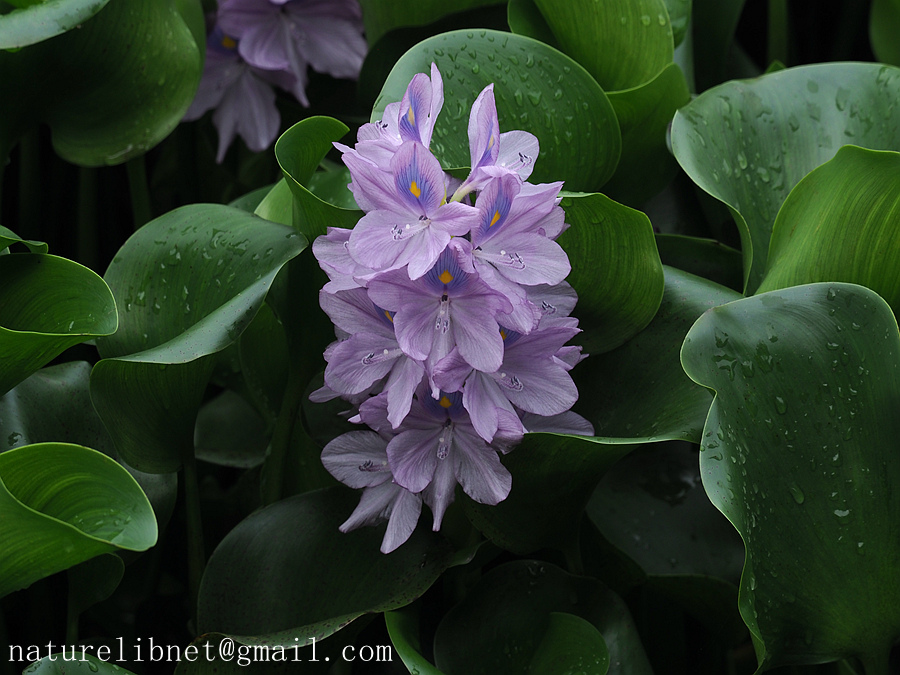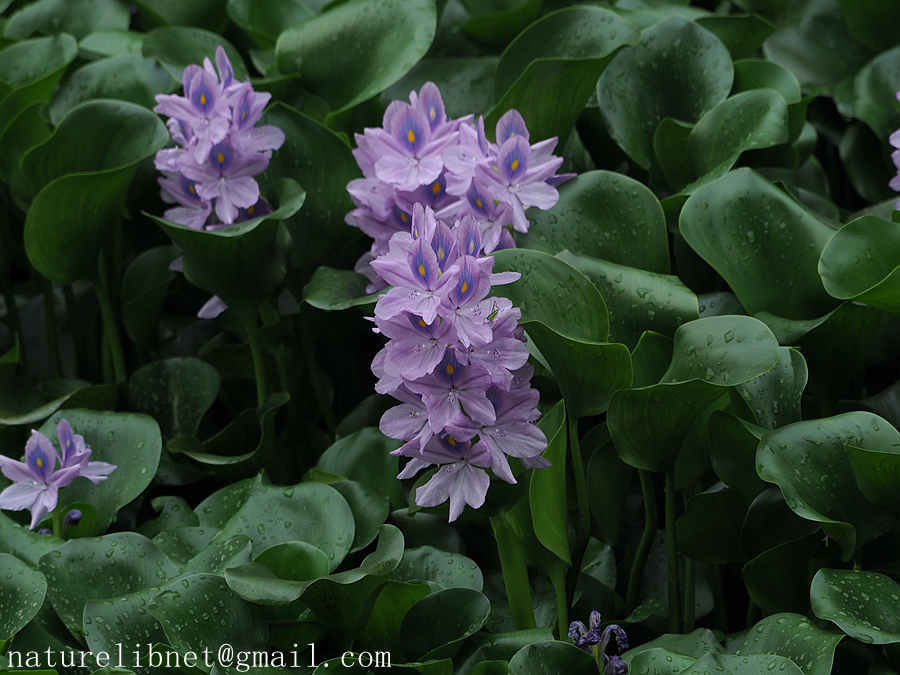- Scientific Name: Eichhornia crassipes (Martius) Solms
- Ref: A. de Candolle & C. de Candolle, Monogr. Phan. 4: 527. 1883.
- Synonyms: Pontederia crassipes Martius, Nov. Gen. Sp. Pl. 1: 9. 1823; Eichhornia speciosa Kunth; Heteranthera formosa Miquel.
- English Common Name:common water hyacinth
- Chinese Common Name:凤眼蓝 feng yan lan
- Family: Pontederiaceae
- Genus: Eichhornia
- Distribution: Naturalized, growing gregariously in pools, ditches, and rice fields; 200–500 m. Anhui, Fujian, Guangdong, Guangxi, Guizhou, Hainan, Hebei, Henan, Hubei, Hunan, Jiangsu, Jiangxi, S Shaanxi, Shandong, Sichuan, Taiwan, Yunnan, Zhejiang [native to Brazil; widely introduced and naturalized in tropics and subtropics].
- Photo: 06/16/2020, Hangzhou, Zhejiang
Herbs floating, 0.3--2 m. Roots many, long, fibrous. Stems very short; stolons greenish or purplish, long, apically producing new plants. Leaves radical, rosulate; petiole yellowish green to greenish, 10--40 cm, spongy, usually very much swollen at or below middle; leaf blade orbicular, broadly ovate, or rhomboidal, 4.5--14.5 × 5--14 cm, leathery, glabrous, densely veined, base shallowly cordate, rounded, or broadly cuneate. Inflorescences bracteate, spirally 7--15-flowered; peduncle 35--45 cm. Perianth 6-parted, segments purplish blue, petaloid, ovate to elliptic, upper one larger with yellow blotch at center adaxially, others subequal but lower one narrower. Stamens 6, 3 long and 3 short; filaments curved, glandular hairy. Pistil heterostylic; stigma glandular hairy. Capsule ovoid. Fl. Jul--Oct, fr. Aug--Nov.(Flora of China)


